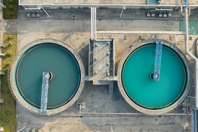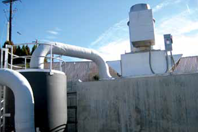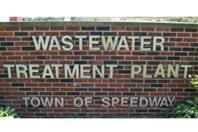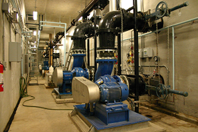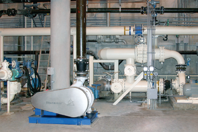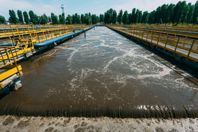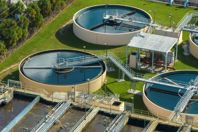SLUDGE & BIOSOLIDS PROCESSING RESOURCES
-
Maintain strict permit compliance even when hydraulic shocks or seasonal loads hit your system. Membrane filtration ensures dependable removal of solids and organic load, providing a critical process stability buffer against unexpected compliance risks.
-
A densified sludge process can improve wastewater treatment by promoting larger, denser sludge particles. This enhances settling, improves nutrient removal, and increases treatment capacity.
-
Faced with persistent odor complaints and limited space, Douglas County Sewer District #1 in East Wenatchee, Washington, turned to the ThermAer second-generation Autothermal Thermophilic Aerobic Digestion (ATAD) system to modernize its biosolids treatment.
-
Faced with soaring ammonia loads—especially during race weekends when 250,000+ fans descend on the town—the Speedway, Indiana Wastewater Treatment Plant was in urgent need of a solution.
-
In a bold move to modernize its wastewater treatment, Bowling Green, Ohio, installed the state’s first second-generation Autothermal Thermophilic Aerobic Digestion (ATAD) system—ThermAer—in 2004. The upgrade expanded the plant’s capacity from 6 to 10 MGD and replaced an inefficient, odor-prone coarse-bubble aeration system.
-
Calera Creek Water Recycling Plant, located in Pacifica, California, recently retrofitted to the Thermal Process Systems’ ThermAer™. This is California’s first installation of the second generation ATAD system.
-
For years, conventional activated sludge (CAS) has been the default in wastewater treatment. But the industry is changing.
-
Sludge management costs aren’t going away, so your team needs to find a solution. Land application bans, PFAS regulations, and rising disposal costs are making sludge an even bigger financial liability.
-
Imagine if wastewater treatment plants (WWTPs) — typically associated with managing sewage — could instead become known for fueling a more sustainable future.
-
Time-based batch processing allows WWTPs to gain the benefits of new suspended growth technologies in a much smaller footprint.
-
Due to rapid population growth in its service area, Verrado Water Reclamation Facility (WRF) in Verrado, Arizona faced a challenge. Its existing treatment capacity of 1.54 millions of gallons per day (MGD) had become insufficient to meet the rising demand and comply with both Total Suspended Solids (TSS) and Total Nitrogen (TN) permits.
-
The Suffolk County Department of Public Works tested the effectiveness and cost-efficiency of PRI-TECH® in controlling odors at a wastewater treatment plant. The technology successfully treated odors and reduced operating costs.
-
Discover how implementing targeted operational strategies, advanced cleaning protocols, and innovative technological solutions, makes it possible to mitigate the impacts of fouling.
-
Read about the targeted strategies wastewater treatment plants can use to effectively manage and prevent sludge bulking,
-
Maintain strict permit compliance even when hydraulic shocks or seasonal loads hit your system. Membrane filtration ensures dependable removal of solids and organic load, providing a critical process stability buffer against unexpected compliance risks.
-
A densified sludge process can improve wastewater treatment by promoting larger, denser sludge particles. This enhances settling, improves nutrient removal, and increases treatment capacity.
-
Faced with persistent odor complaints and limited space, Douglas County Sewer District #1 in East Wenatchee, Washington, turned to the ThermAer second-generation Autothermal Thermophilic Aerobic Digestion (ATAD) system to modernize its biosolids treatment.
-
Faced with soaring ammonia loads—especially during race weekends when 250,000+ fans descend on the town—the Speedway, Indiana Wastewater Treatment Plant was in urgent need of a solution.
-
In a bold move to modernize its wastewater treatment, Bowling Green, Ohio, installed the state’s first second-generation Autothermal Thermophilic Aerobic Digestion (ATAD) system—ThermAer—in 2004. The upgrade expanded the plant’s capacity from 6 to 10 MGD and replaced an inefficient, odor-prone coarse-bubble aeration system.

